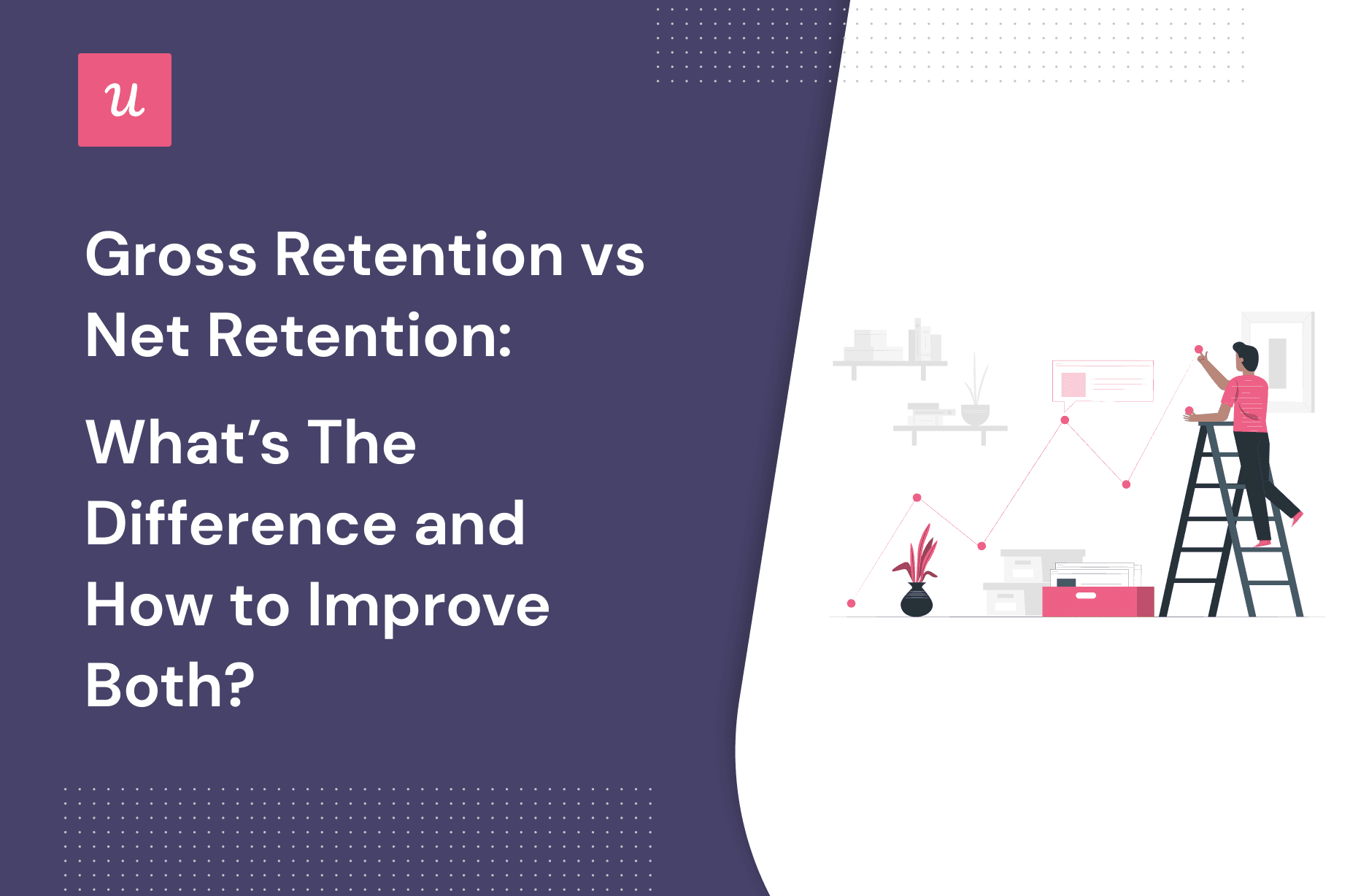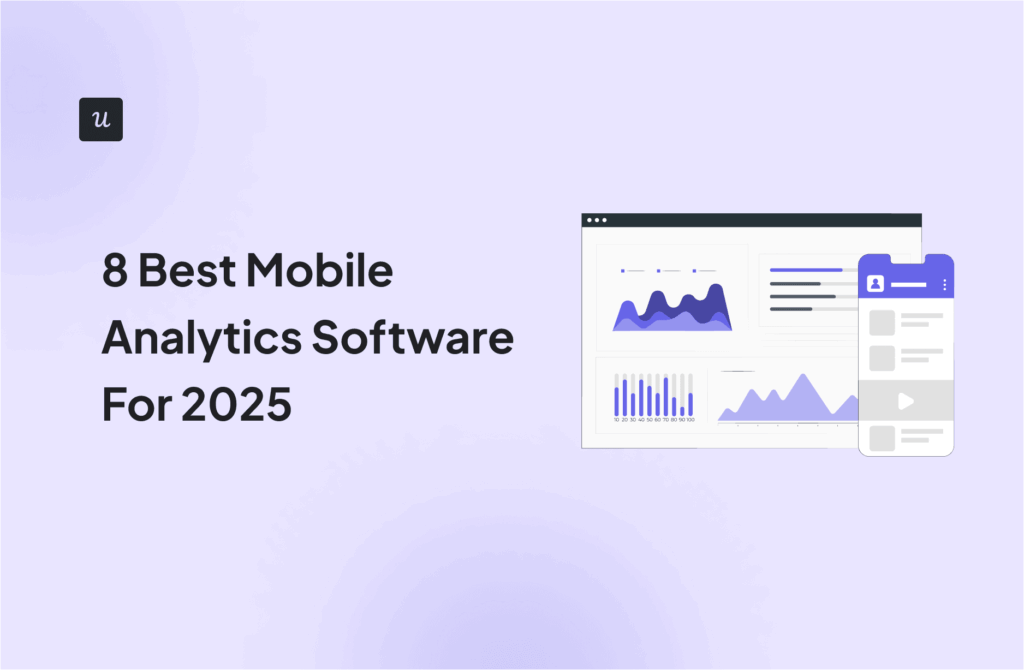
Gross Retention vs Net Retention: What’s the Difference and How To Improve Both?
Get The Insights!
The fastest way to learn about Product Growth, Management & Trends.
What is Net Revenue Retention (NRR)?
Net Revenue Retention (NRR) gives you the percentage of the revenue that you can retain from existing customers within a particular time frame.
Why is tracking the Net Revenue Retention Rate important?
Net Revenue Retention is a key metric as it helps you determine the financial performance of your company. You can see how many of your existing customers are remaining loyal and continuing their subscriptions, and how many are downgrading or canceling.
NPR’s insights are excellent for expanding your customer base. As a result, your company’s growth rate becomes more predictable, making it easier for investors to gauge how good your prospects are.
How to calculate the Net Revenue Retention rate?
To calculate Net Revenue retention, add the starting and expansion MRR and subtract downgrade and churn MRR from the results. Divide the value by the starting MRR and multiply the ratio by 100.
Suppose that your May MRR was $80,000. You noticed that churns and downgrades led to losses of $2,000 and $1,500 respectively, while you gained an additional $10,000 from upgrades. This made your NRR rate: [(80,000-2,000-2,500+8,000)/80,000] x 100% = 104.4%.
Note that NRR rates can reach above 100% when the upgrades are enough to make up for the losses.

What is Gross Revenue Retention (GRR)?
Gross Revenue Retention (GRR) is a measure of the percentage of the revenue retained over a specific period. Unlike NRR, it excludes expansion MRR from its calculation.
Why is tracking the Gross Revenue Retention Rate important?
This metric shows how successful you are in retaining customers since it only measures existing MRR and churns/downgrades. It shows the stability of your revenue and suggests how much more revenue your company can get while user spending remains the same.
Moreover, you can keep an eye on your churn rate and observe how much it impacts your MRR. It can alert you if you are at risk of losing revenue in the long run. This way, you can take precautionary steps to maintain high retention rates.
How to calculate the Gross Revenue Retention rate?
To measure the GRR rate, subtract the churn and downgrade MRR from the starting MRR and divide the value by the starting amount, then multiply the ratio by 100.
Now let’s calculate the GRR rate for May using values from the previous example. Without the expansion MRR, the GRR would be: [(80,000-2,000-2,500)/80,000] x 100% = 94.4%.

Gross Retention vs Net Retention: What’s the difference?
Both gross retention and net retention are important for customer success. They just have different priorities.
Net Retention helps you pay attention to how fast your revenue increases from upgrades, so you can formulate your upsell and cross-sell strategies accordingly. If you are falling behind in any of these areas, you can recover by improving onboarding to increase adoption and upgrading.
In contrast, gross retention lets you measure your revenue’s stability without taking into account expansion opportunities. In addition, you can track downgrades and churns to see how they impact losses. Then you can improve in-app experiences to reduce churn and downgrades.
Gross Retention vs Net Retention industry benchmarks
Now let’s check the SaaS industry benchmarks as of 2021.
For public companies, the median net revenue retention (or net dollar retention) rate is 114%, whereas, for private companies, the rate is between 60% and 148%. The median gross revenue retention rate for private companies is between 88% and 90%.

3 Tips to improve your Net Revenue Retention rate
What can you do to improve your NRR rate? Below are the 3 tips you can use to achieve that.
Let’s dive in.
Use in-app notifications to show freemium users what they are missing out
In-app messages are perfect for getting users to upgrade their subscriptions. While push notifications just pop up on a user’s home screen, in-app notifications send targeted messages inside your product.
Tooltips and modals are two in-app notifications that are useful in encouraging customers to upgrade. For example, Miro allows its free trial users to create up to 3 boards. Once they click on the “New” board, the following text is prompted to let users know this feature is locked.
You need to upgrade to create private boards. And who doesn’t like privacy?

Drive account expansion with contextual in-app messages
Contextual account expansion involves sending the right messages at the right time. The desired outcome here is to deliver continuous value to customers while maximizing your revenue at the same time.
By completing milestones, users go from experiencing the AHA moment, to activating and engaging with your product. Ultimately this leads to contextual account expansion.

Apart from tooltips, other types of in-app messages include modals, banners, and checklists.
For instance, when users scroll up to look for older messages, Slack displays a banner to tell them that they’ve reached the end of the 10,000 most recent messages.
In this example, Slack doesn’t send emails to prompt them to upgrade. It’s right there in the app, in front of the customers.

Use NPS surveys to proactively identify detractors before they churn
NPS surveys are great for measuring customer loyalty and identifying churn trends. With such surveys, you simply ask users how likely they are to recommend your product to others on a scale of 1 to 10.
NPS feedback allows you to find detractors who score 6 or below and are at high risk of churning or downgrading. You can add a follow-up question in the survey to solicit user feedback regarding their scores.
This will help you identify friction points and proactively reach out to detractors to offer help or fix their problems. These will reduce churn rates and improve retention.

4 tips to improve your Gross Revenue Retention rate
Let’s move on and see how you can improve your Gross Revenue Retention rate. Here are 4 tips to use.
Use interactive walkthroughs to guide users and improve customer retention
Rather than forcing customers to sit through a lengthy product tour, have an interactive walkthrough that helps users discover and engage with the most important features.
Walkthroughs are contextual, as they introduce features that users might not be aware of but still need. This drives adoption and improves retention.
Interactive walkthroughs take a “learn by doing” approach and users understand the product features while actually using it.
Here is an example of Kontentino’s walkthrough that guides users on chat widget styling.

Use reminder modals to increase the free trial to paid conversion rate
Remember how in-app messages can boost your NRR rate? Some of them, such as modals, can even help to improve your Gross Retention rate.
Modals can be used to send reminders to users that their free trial is about to end soon, and they have to upgrade their subscriptions to continue using the tool. Once again, modals are contextual, and they can significantly increase your free trial to paid conversion rate.
In addition, you can use modals to ask users why they are not upgrading, like in the image shown below. This helps you understand what issues your customers have so you can fix them.

Track in-app user behavior to uncover friction points and fix them
User behavior analytics helps you make informed decisions when making improvements to your product design and experiences.
By tracking feature usage and in-app behavior, you can uncover friction points at every stage of the user journey and figure out the necessary actions you need to take.
For example, it lets you proactively reach out to users before the free trial period is over. You can trigger a customer satisfaction survey or NPS survey and act on the feedback to boost the trial to paid conversion rate.
Tracking user behavior is greatly enhanced by the use of segmentation. Doing so helps you target specific groups who are struggling and improve their experiences.
Userpilot enables you to create advanced user segments according to behavior, engagement level, user identity, and custom events.

Use self-service support to assist users faster and boost customer satisfaction
Give users all the help and resources they need inside the product to reduce friction in getting help and shorten the learning curve.
One form of in-app self-service support is a resource center. It has any help element a user might need, such as FAQs, troubleshooting tips, idea submission, and even a link to your knowledge base.
Therefore, customers can solve repetitive problems on their own, significantly decreasing the number of support tickets. Your support team can then focus on more pressing matters.

Best tools to track and improve NRR and GRR in SaaS
Here are the 3 best tools you can use to improve both NRR and GRR rates.
Userpilot
Userpilot is a product growth and adoption tool that lets you create checklists, tooltips, modals, and interactive walkthroughs to promote feature discovery and guide users on how to get the most value from your product.
You can also create microsurveys to collect user feedback and uncover invaluable insights. Plus, it allows you to create an intuitive in-app resource center to offer quick customer support.
Onboard and engage mobile app users by creating personalized messaging, push notifications, and surveys with Userpilot.
And all of these can be done code-free.

Here is an example of an NPS survey created by Userpilot. The platform also lets you perform the required analytics on the survey results so that you can proactively pursue detractors.

Hotjar
Hotjar is a behavior analytics platform that helps you track and understand patterns in in-app user behavior. Its signature heat maps categorize every element in your website by tag, classes, etc., and map all elements customers interact with.

Mixpanel
Mixpanel is a product analytics platform that provides real-time data on user interactions with your product. You can track and see the KPI trends over time.
You can dig even deeper into the data and use its automated analysis to learn the reasons behind the patterns.

Wrapping it up
Both Gross Retention and Net Retention are important to track as they give insights from different angles. Remember your business objectives and pay attention to both metrics accordingly.
Want to collect in-app behavior insights and boost your Gross Retention and Net Retention rates? Get a Userpilot demo and see how easily you can do it.






